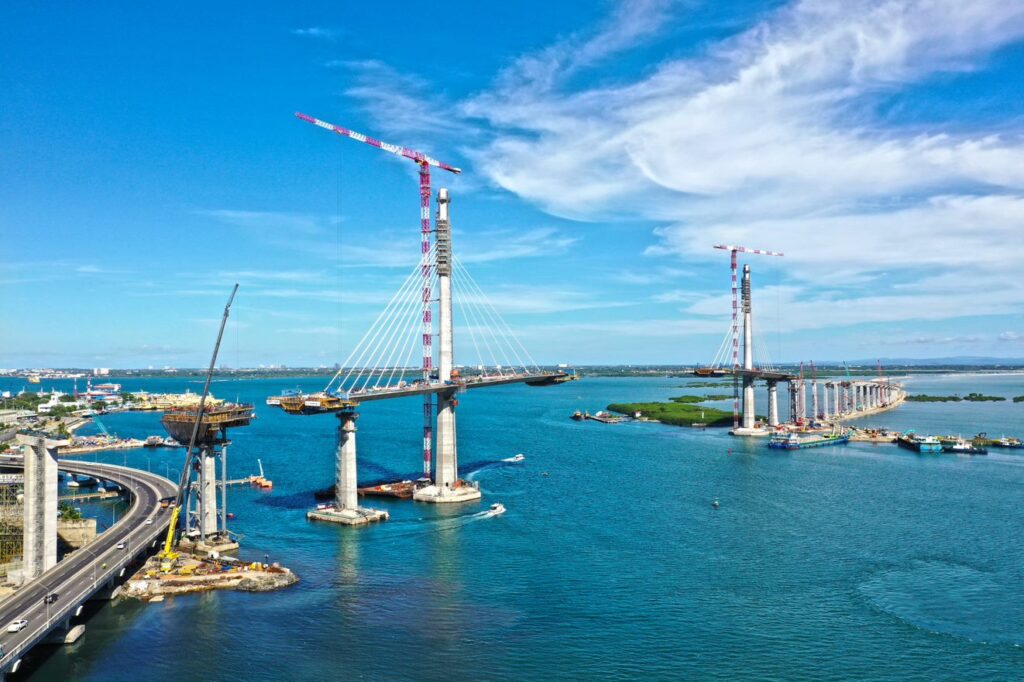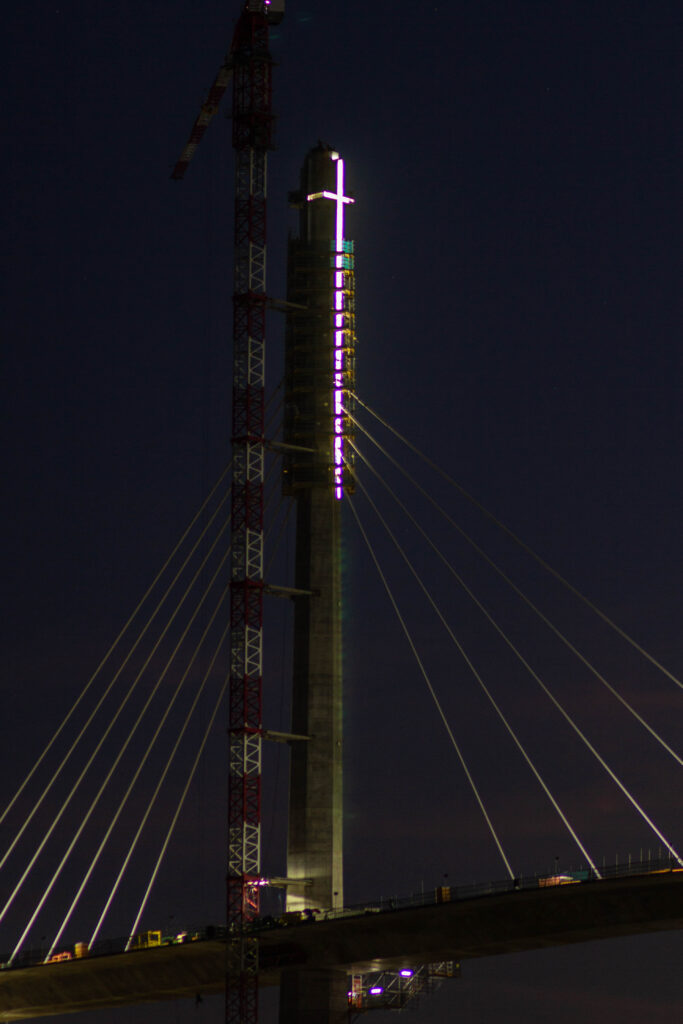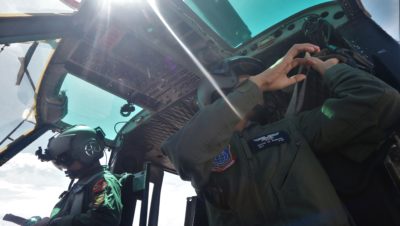Iconic bridge featured in 500-year history of PH role in world’s 1st circumnavigation

The Cebu-Cordova Link Expressway (CCLEX), now in its final stages of construction in the “Queen City of the South,” has been selected one of the key sites related to an epic milestone — when the Philippines played a key role in helping achieve the circumnavigation of the world 500 years ago.
History books have recorded the first circumnavigation of the world achieved by the Magellan-Elcano expedition which sailed from Seville, Spain in 1519, crossing the Atlantic, Indian, and Pacific Oceans – and reaching the Philippines in March 1521, landing in Cebu one month thereafter.
Historians assert and National Quincentennial Commission (NQC) affirm that 1521 was not the discovery of the Philippines, because the country had been visited by many voyagers ahead of Magellan and his crew.
The same historical commission has chosen the modern iconic bridge CCLEX among history-making structures built in time for the half-a-millennium anniversary when the Philippines loomed large in the world map.
History has told and retold the epoch-making narrative when Ferdinand Magellan’s Spanish fleet, the Armada de Molucca crossed the Atlantic, spent winter in South America, navigated the Straits of Magellan, then spanned the Pacific to the Philippines.

The 8.5-kilometer CCLEX, set for substantial completion in December 2021, will rise in Cebu City’s skyline, hovering over world class infrastructure and state-of-the art tollway technologies that have been the signature design of the Metro Pacific Tollways Corporation (MPTC), builder of CCLEX.
The tollway bridge spans the Mactan Channel, linking Cebu City with the Municipality of Cordova and outlying towns of Cebu Province.
“Through this tollway bridge, we are happy enough to be part of the vision of accelerating the progress and modernization of the entire Cebu province,” said Rodrigo E. Franco, MPTC President and CEO.
“We are doubly glad that – through CCLEX – we have key participation in the celebration of the 500th year of the Philippines’ key role in the first circumnavigation of the Earth. This happens only once in our own lifetime,” Franco added.
Reflecting on this bit of history, Franco said: “As always, when people travel, they enter new frontiers and discover new cultures, open trading posts, and forge commercial partnerships and alliances.”
“Today,” he added, “this CCLEX bridge will do the same – stimulating commerce and industry, facilitating cross-currents of culture, and further accelerating development.”
The CCLEX, called an “engineering marvel” for its aesthetically designed structures and modern tollway management systems, is being built by MPTC through the Cebu-Cordova Link Expressway Corporation (CCLEC). CCLEC is a wholly owned subsidiary of MPTC.
Set to be a new landmark in the country, CCLEX will have two lanes in each direction that will provide a safe, quick and scenic passage to an estimated 50,000 vehicles daily, easing the traffic in two old bridges – the Marcelo Fernan Bridge and the Mandaue-Mactan Bridge.
CCLEX has a design speed of 80 kilometers per hour (kph) and a navigational clearance or height of 51 meters to allow large vessels to pass underneath the bridge.
MPTC is now completing the installation of eight structures with the shape of the cross, inspired by the Magellan’s Cross, a Christian symbol brought in by the Spanish fleet led by Ferdinand Magellan, and set up in Cebu alongside holding the first Catholic mass.
CCLEC operates under the corporate umbrella of MPTC which, in turn, presides over toll road companies in the Philippines and the rest of the ASEAN. MPTC is part of the Metro Pacific Investments Corporation (MPIC), a publicly listed infrastructure holding company of the MVP Group of Companies.
MPTC is the largest toll road builder and operator in the Philippines, which has expanded its toll operations from Luzon to the Visayas and in neighboring countries which belong to the Association of Southeast Asian Nations (ASEAN).

The Spanish fleet commanded by Portuguese-born Magellan was made up of five ships with 270 men: Trinidad under Magellan as Captain General; San Antonio under Juan de Cartagena; Concepcion under Gaspar de Quesada; Santiago under Joao Serrano; and Victoria under Luiz Mendoza.
As Philippine and world history recorded it, Magellan died in Mactan after a bruising battle with the men of Lapu Lapu in 1521. Juan Sebastian Elcano took command of the ship Victoria sailing back to Spain across the Indian Ocean, round the cape of Good Hope and north along the west coast of Africa – thus completing the earth’s circumnavigation. Elcano brought back his 18 surviving men nearly three years in September 1522. The circumnavigating journey began with 720 men.
On April 27, 2021, the CCLEX crosses will be lighted as part of the NQC’s Quincentennial celebrations and will be incorporated in the evening show of the “500th Anniversary of the Victory of Mactan.” The lighting of the CCLEX crosses will also be integrated in several other events such as the drone show and cultural show, and the grand fireworks display at the Liberty Shrine in Lapu-Lapu City, Cebu.
comments are temporarily disabled.














